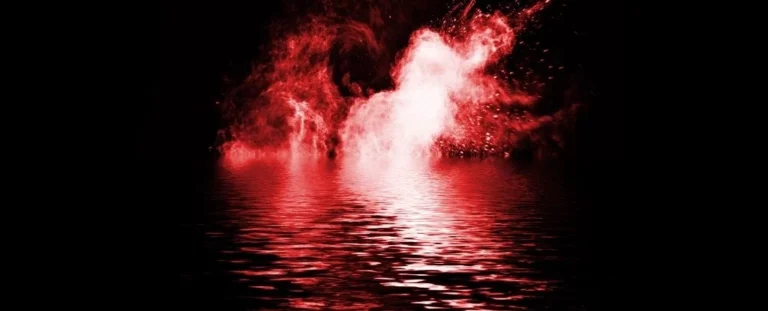It’s Possible That an Interstellar Object Hit Earth. Researchers Want to Explore the Ocean
An item struck the water in the year 2014 not far from the coast of Papua New Guinea. The meteorite may be an interstellar object, according to data gathered at the time; if so, it would be the first interstellar object known to exist on Earth and just the third known (after ‘Oumuamua and Borisov).
Although it would be a long shot to start an underwater expedition in search of it, the scientific benefits may be huge.
The putative interstellar object, known as CNEOS 2014-01-08, is thought to have been roughly half a meter in width. Harvard professor Avi Loeb and then-graduate student Amir Siraj were the first to identify the object’s probable interstellar origins.
Its exceptionally high heliocentric velocity, or the fact that it was traveling at rates that suggested it might not be trapped inside the Sun’s gravitational well, led Siraj and Loeb to draw this conclusion using catalog information on the object’s journey.
There is a caveat, though. Data from a US Department of Defense spy satellite meant to track military activity on Earth provided the information needed to calculate the object’s collision with the planet.
The US military is hesitant of letting the specific capabilities of its satellite to be made public, hence the measurement’s exact error numbers remain a closely held secret.
However, many members of the scientific community continue to be understandably reluctant to formally designate CNEOS 2014-01-08 as an interstellar object in the absence of this information. As a result, Siraj and Loeb’s article is still unpublished since it hasn’t gone through peer review.
However, their argument was strengthened in April 2022 when Joel Mozer, the Chief Scientist of the US Space Force’s Space Operations Command, examined the relevant classified data and “confirmed that the velocity estimate reported to NASA is sufficiently accurate to indicate an interstellar trajectory.”
6/ “I had the pleasure of signing a memo with @ussfspoc’s Chief Scientist, Dr. Mozer, to confirm that a previously-detected interstellar object was indeed an interstellar object, a confirmation that assisted the broader astronomical community.” pic.twitter.com/PGlIOnCSrW
— U.S. Space Command (@US_SpaceCom) April 7, 2022
Siraj and Loeb were persuaded of the object’s interstellar origin by the US Space Force’s statement, which was sufficient to persuade them of its origin despite the official scientific classification of CNEOS 2014-01-08 appearing doomed to remain in limbo for the time being. They have since proposed strategies for discovering the object and studying it closely.
The meteorite would have burnt up in large portions when it entered the atmosphere of Earth, probably leaving just shards that are now dispersed throughout the ocean floor.
However, there is still some optimism since the tracking information from the satellite, along with information on the wind and ocean currents, can give a feasible search area of only 10 km by 10 km.
More crucially, it is anticipated that the shards will be magnetic, making it possible for a ship trawling with a powerful magnet to collect the tiny meteorite bits from the ocean floor.
In order to carry out their proposal, Siraj and Loeb have partnered with an ocean technology consulting firm.
Loeb stated that such a search could give us “the opportunity to actually put our hands on the relic and figure out whether it’s natural, whether it’s a rock, or whether, you know, a small fraction of those [interstellar objects] might be artificial” in an interview with Universe Today from last year.
In recent years, Loeb has been outspoken regarding the possibility that interstellar objects like CNEOS 2014-01-08, ‘Oumuamua, and Borisov are man-made creations of extraterrestrial intelligence. One of his primary scientific interests as the leader of the Galileo Project is the lookout for signs of intelligent life elsewhere in the cosmos.
However, some of his astronomical peers have criticized him for some of his most outlandish assertions. Loeb isn’t speculating that CNEOS 2014-01-08 is an extraterrestrial artifact in this case, though.
In their most recent work documenting the ocean excursion, he and Siraj conclude, “This discovery does not suggest that the first interstellar meteor was purposely created by a sophisticated society and not natural in origin.” But it’s obvious that Loeb believes that going to discover the thing and having a look wouldn’t be harmful.
Even if it is only a rock, which is by far the most likely scenario, it will nevertheless provide us with significant information on the makeup of rocky materials outside of our Solar System.
This article was originally published by Universe Today. Read the original article.
Do not forget to share your opinion with us to provide you with the best posts !




Your style is so unique compared to other people I have read stuff from.
Thank you for posting when you’ve got the opportunity, Guess I will just bookmark this site.
Excellent post. I used to be checking continuously this blog I handle such information a lot.
I handle such information a lot.
and I’m impressed! Very helpful info specially the
remaining phase
I was looking for this certain info for a long time.
Thanks and best of luck.